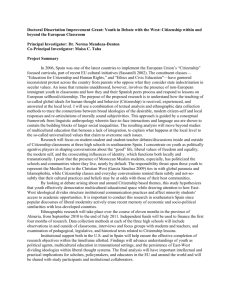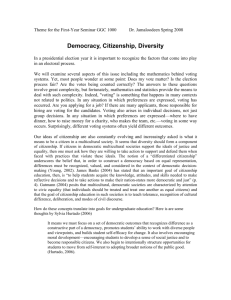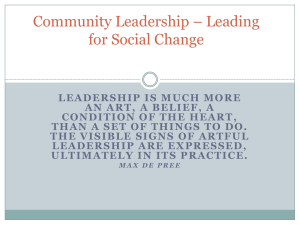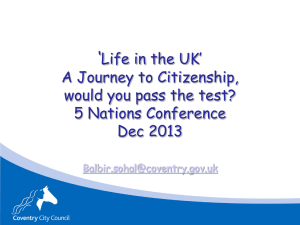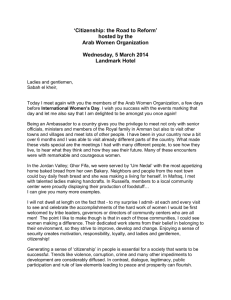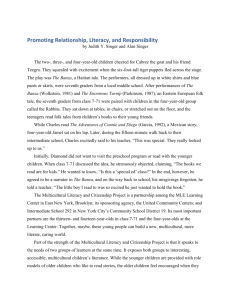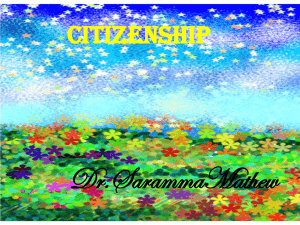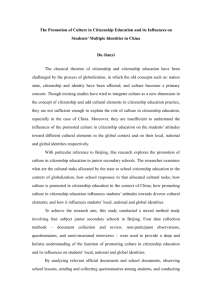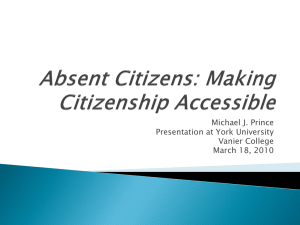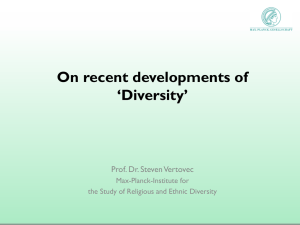M Martiniello ppt
advertisement
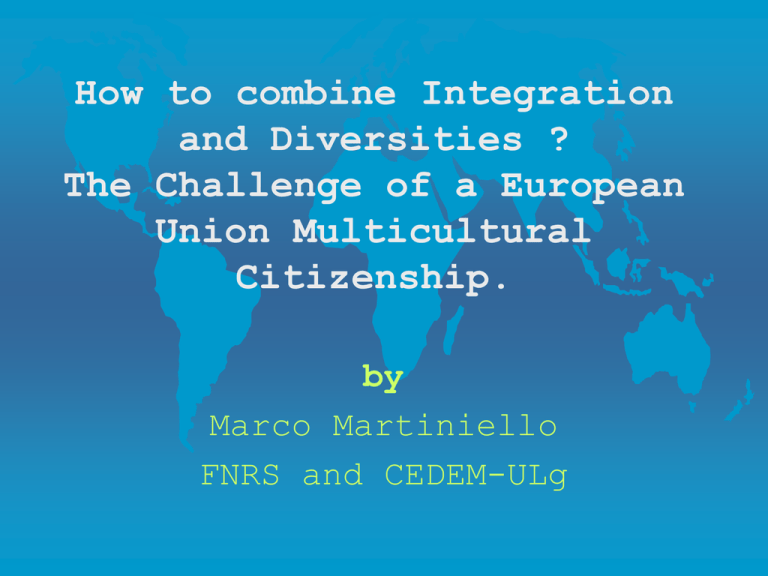
How to combine Integration and Diversities ? The Challenge of a European Union Multicultural Citizenship. by Marco Martiniello FNRS and CEDEM-ULg Preliminary Remarks: Anti-multiculturalism backlash and the neoassimilationist political and policy agenda: “We are all anti-multiculturalist now !” The rise of the diversity discourse and of the “interculturalist” discourse A contradiction ? Preliminary Remarks: features of anti-multiculturalism Focus on Islam and Muslims Obligations precede rights Retreat from the state A selective immigration policy A European debate on “integration” of newcomers A RESPONSE TO ANTI-MULTI. 5 PARTS: 1. The context: the diversification of EU diversity – EU “super diversity” 2. The issue: integration and diversities in the EU 3. Do we need a EU abstract model of “diversity management”? 4.Towards a multicultural citizenship of the European Union? 5. Conclusion PART 1 – The context: the diversification of EU diversity- EU “super diversity” A wide variety of identities A process of diversification of diversity The sources the diversification of EU diversity: Enlargements Sub-national political mobilization Immigration: diversification of patterns, “feminization” Gypsy - Roma populations Jewish communities Social and economic diversity: A European permanent underclass ? New configurations of inequality within mainstream society Other dimensions of diversity: Political diversity The Gender Dimension of Diversity Sexual Orientation PART 2 - The Issue How can the EU combine the search for a more united and integrated social and political space while at the same time recognizing the various dimensions of its diversity and fostering more social and economic equality ? PART 3 - Do we need a EU Model of Diversity Management ? - - - various national narratives of citizenship, Integration and Multiculturalism A dimension of national sovereignty The debates focuses on the position of immigrants and their offspring However, the debate concerns the whole society Priority to a pragmatic approach PART 4 - Towards a Multicultural Citizenship of the EU?: 5 points Cultural Diversity and Social Justice Equal basic Rights and Duties The symbolic Recognition of Diversity Integration, Diversity and Public Policies The Issue of Political Representation Cultural Diversity and Social Justice Combining issues related to cultural diversity and issues related to Social Justice More social and economic equality brings more open ethno-cultural identities Equal Basic Rights and Duties The supporting Pillar of EU multicultural citizenship Extension of EU cit to all legal thirdcountries residents Equal Basic Rights and Duties Respecting core values ?: – Democracy and democratic procedures – Gender Equality – Rights of the human person and respect of her physical and psychological integrity – The principle of non-discrimination – Respect for diversity (cultural, religious, etc.) The Symbolic Recognition of Diversity Europe can not be defined by its JudeoChristian heritage only. Recognizing diversity without rigidifying ethnic, racial and religious boundaries The recognition is mutual Role of Arts and cultural institutions Integration, Diversity and Public Policies (1) The case for State and EU interventions No miraculous “model” to import Constitutional solutions ? Flexibility Daily ‘savoir-faire’ Integration, Diversity and Public Policies (2) Financial support of associations engaged in the promotion of multicultural dialogue Strong anti-discrimination and anti-racist legislations and policies Integration, Diversity and Public Policies (3) Opening up public education to cultural diversity – Promoting multilingualism – More diverse curricula Integration, Diversity and Public Policies (4) Accommodation of religious diversity: – Not only Islam – Equal treatment of all religions and nonreligious beliefs Integration, Diversity and Public Policies (5) Access to Citizenship: – Liberalizing access for permanent residents – Double Citizenship ? – Direct access to EU citizenship ? Integration, Diversity and Public Policies (6) Political Participation and Representation – Local voting and eligibility Rights – Forms of Consultation – Elected political institutions should reflect the sociological diversity. The case for Affirmative Action ? PART 5 - CONCLUSION A united and integrated democratic EU can only be diverse and multicultural “multicultural citizenship supposes the constitution of a citizenry made of active citizens who share the same rights and duties, the same public space, support the democratic project and respect the law and the legal and political procedures. These citizens can display varied and multiple identities as different cultural practices both in private and in public. Their identity and cultural choices do not affect their position in the social, economic and political order” There is a long way between reality and utopia
